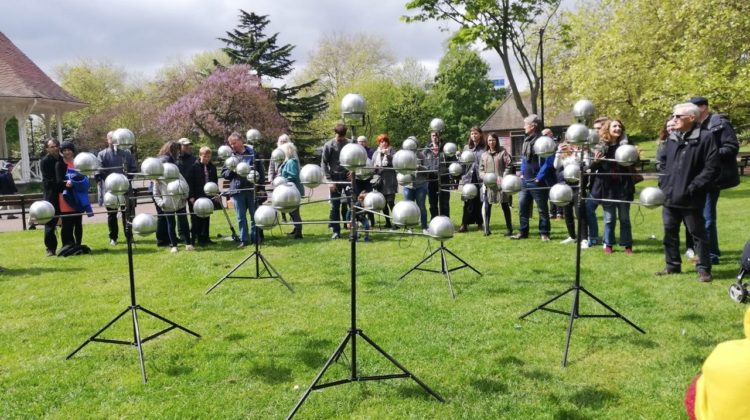
Ray Lee brings Congregation to Malta as part of the Three Palaces Festival.
Here, the artist shares the concept and the creative process behind it.
Since its conception, Congregation has been around quite a few places in the world. How was the idea born?
I was trying out ideas during a residency at the National Theatre Studio in London, UK. I had some small aluminium spheres with me and I thought it would be fun if they could make sound.
I put a small loudspeaker inside, created a suitably sci-fi sound for it to make and went for a walk. I was amazed by how intrigued people were as I walked past them carrying a strange, sonic silver sphere.
Then, I imagined lots of people, all carrying spheres, being guided by sound to a secret destination… and Congregation was born! I’m also influenced by science fiction and remembered having seen an episode of the popular TV programme Dr Who back when I was a young child in the 1960s. There were creatures who were controlled by mysterious silver spheres….
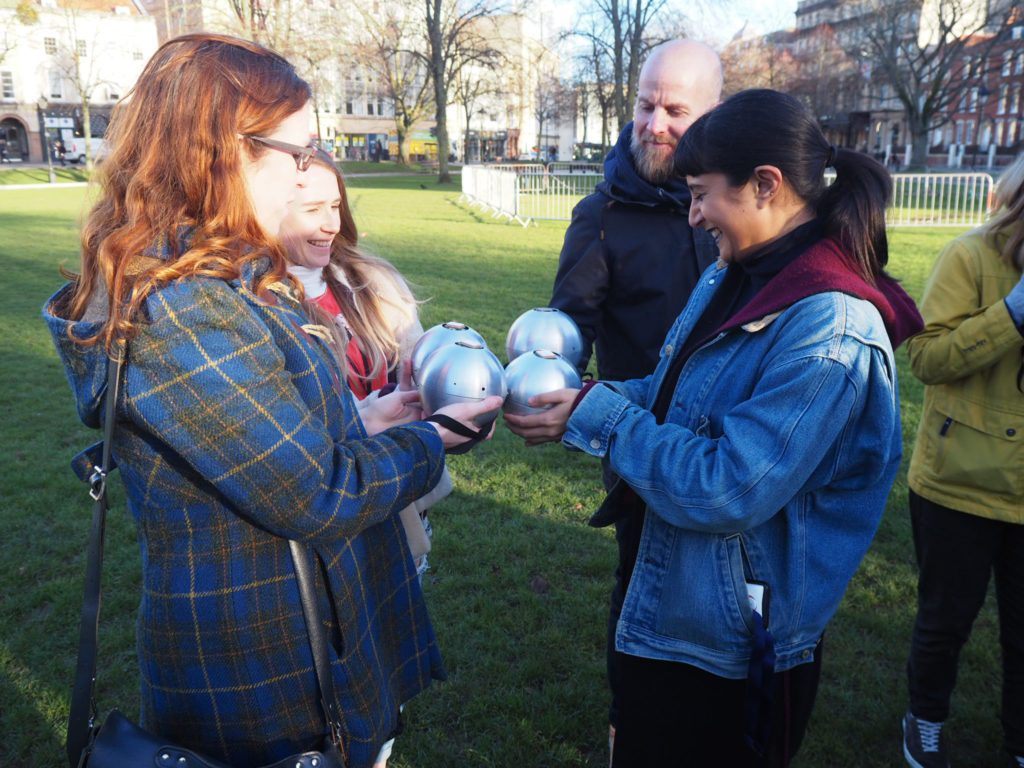
You are primarily a composer and an artist – yet, you also have a fascination with radio waves and take a very scientific approach to your work. How did this come about?
I wouldn’t say my approach was scientific. My interest is in trying to create a sense of wonder, and wonder has been one of the guiding forces behind scientific discovery.
I have a fascination with magnetism, for example. This mysterious force that we can feel and experience, yet we cannot ‘see’. My approach as an artist is intuitive and very hands-on. I like to make things and explore their potential through direct experience.
Would you say that science and artists are typically viewed as polar opposites – and is such a view justified, or would you say you’ve shattered it with Congregation?
I would say that art and science are two ways of looking at the universe. Art allows us to express and experience things that science doesn’t. I don’t think my work is so radical in this respect. Many artists explore the relationship between science and art. I like to make work which encourages our sense of wonder with our incredible world.
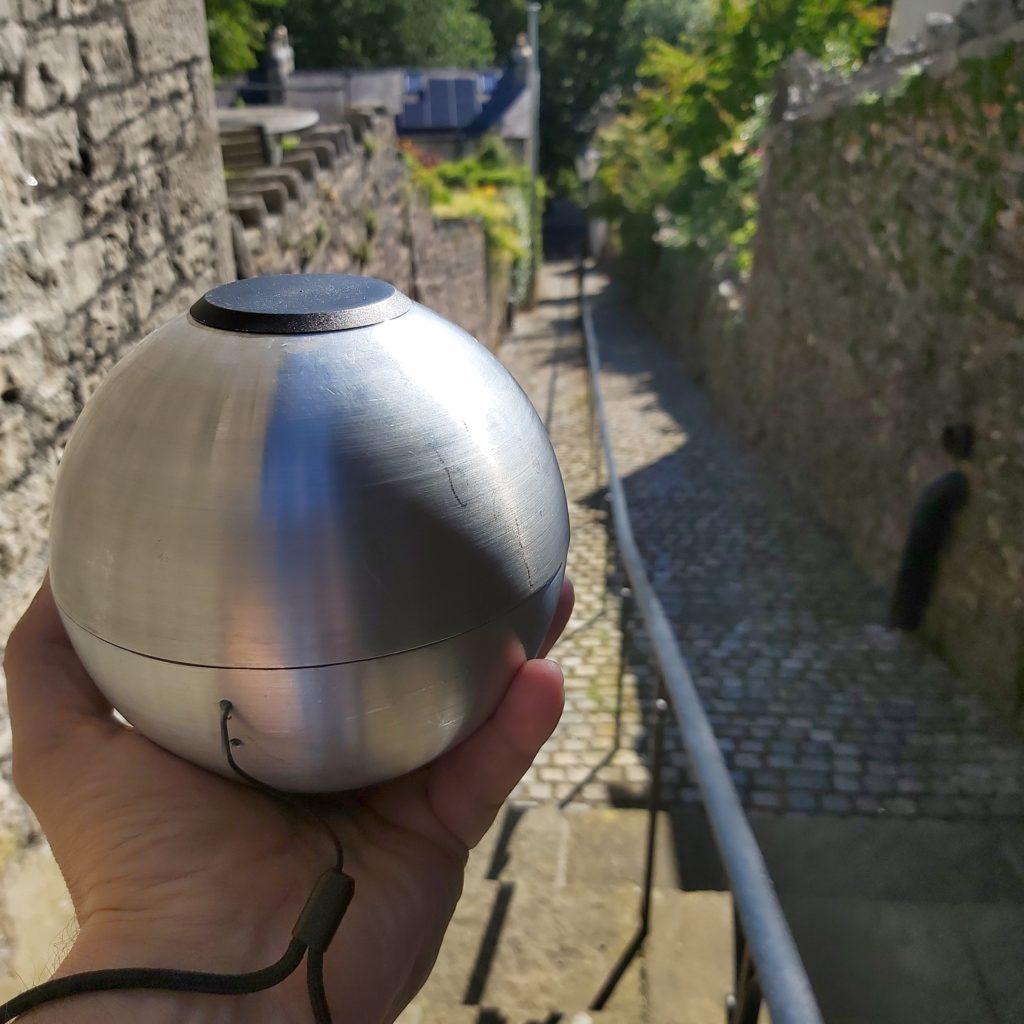
How do you describe Congregation to someone who has never seen it?
It depends on whom I’m telling. I usually tell people that the sonic sphere wants to take them on a journey to a secret location.
The success of Congregation also depends a lot on audience participation. How are the sphere carriers picked?
The audience chooses to participate in Congregation. I don’t select them, they select themselves. We present the work at arts festivals and the audience see it advertised, think that looks interesting and come along and let the sphere take them on a journey!
Have you ever encountered audience issues? Or maybe even a funny anecdote when things did not go quite as planned?
I am always terrified when I let a whole bunch of people who I have never met before go off with my lovely shiny silver spheres! Will I ever see them again? (I always do by the way, we haven’t lost any yet.)
The funny thing is seeing all the reactions of those people who have no idea why there are lots of people walking around with these strange humming and beeping spheres.
It’s a bit like being in a science fiction film. Maybe the spheres have invaded and taken over! Lots of people have come up to me and said: “I have to ask you – I keep seeing people walking past carrying silver spheres. What on earth are they?! Where are they going, what are they doing?!”
I usually reply that it’s top secret and that I can’t possibly tell them.
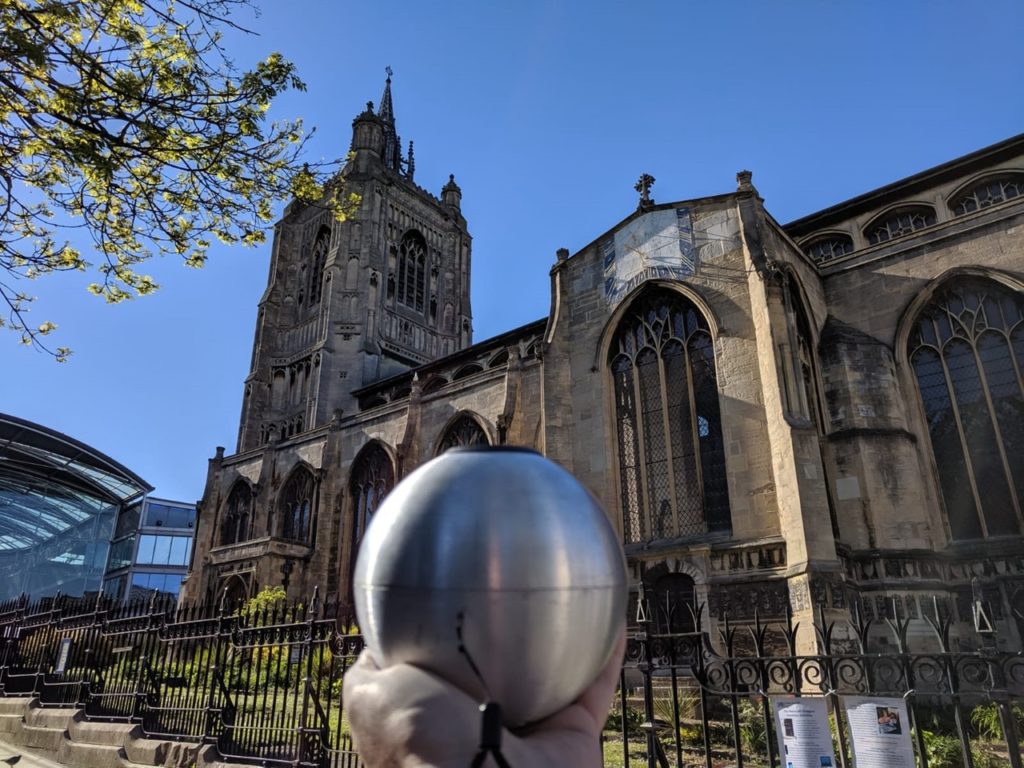
How did your Malta project come about – is this your first time in Malta?
The artistic director of the festival, Michelle Castelletti, had a go with one of my spheres in Oxford and loved the idea. This is my first time in Malta, what an amazing island!
Why Mdina?
I think Michelle really liked the idea of the contrast between this ancient city and these high tech, futuristic spheres. I like the way it seems even more sci-fi than normal!
What are the logistics involved into organising such an event and making sure it goes seamlessly?
Congregation takes a huge amount of planning. I have to visit the sites and look for suitable routes that the sphere might take you on, besides choosing the secret final destination where the spheres all come together to sing their science fiction symphony. I’ve been lucky that the team at Festivals Malta has been really great in helping to make everything happen.
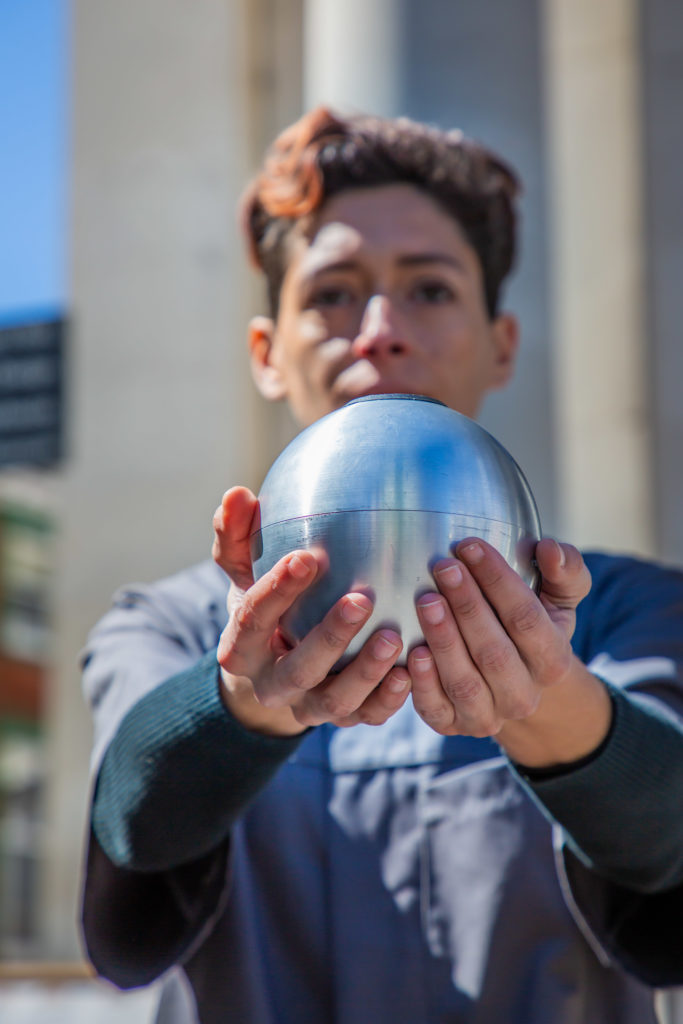
Do you believe that this is also an approach that can be integrated within the education system – marrying arts with science?
I don’t think it’s necessarily a question of marrying science with art. The scientific method has transformed our world and enabled humans to make extraordinary advances in technology and medicine.
Art can offer something different. Artists by their nature often work with intuition and through a practice-led approach. They use their hands to make work. There is a value in such haptic based approaches. Art can let us see and experience existence in a different way. But what is clear is that we need more art, music, dance, theatre in schools and the education system, not less.
Congregation at Mdina takes place on November 10 at. This is a free event, and more information is available here.
Read more about the Three Palaces Festival here. Find out more about our commercial collaborations here.

Leave a Reply